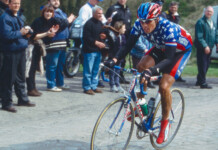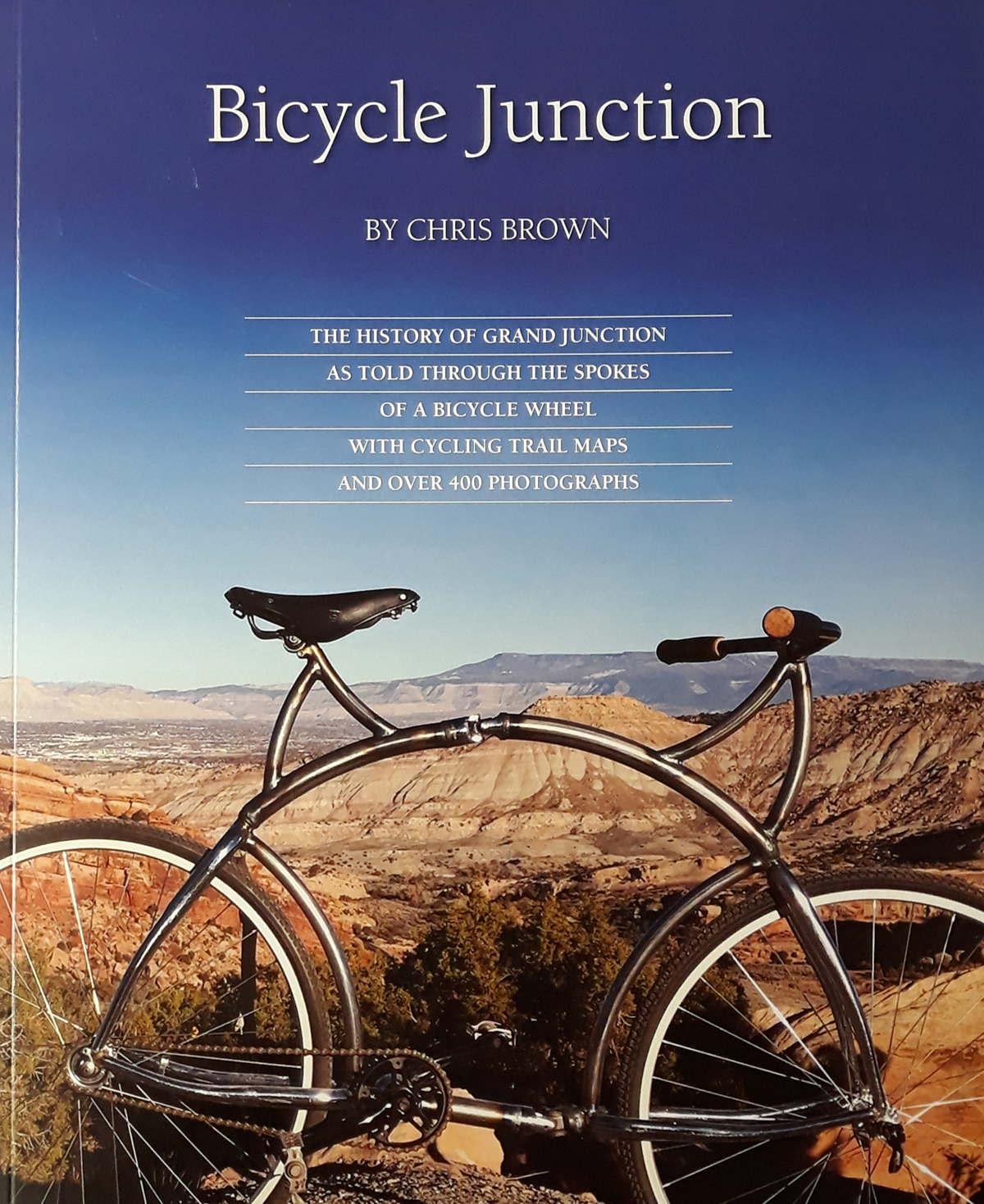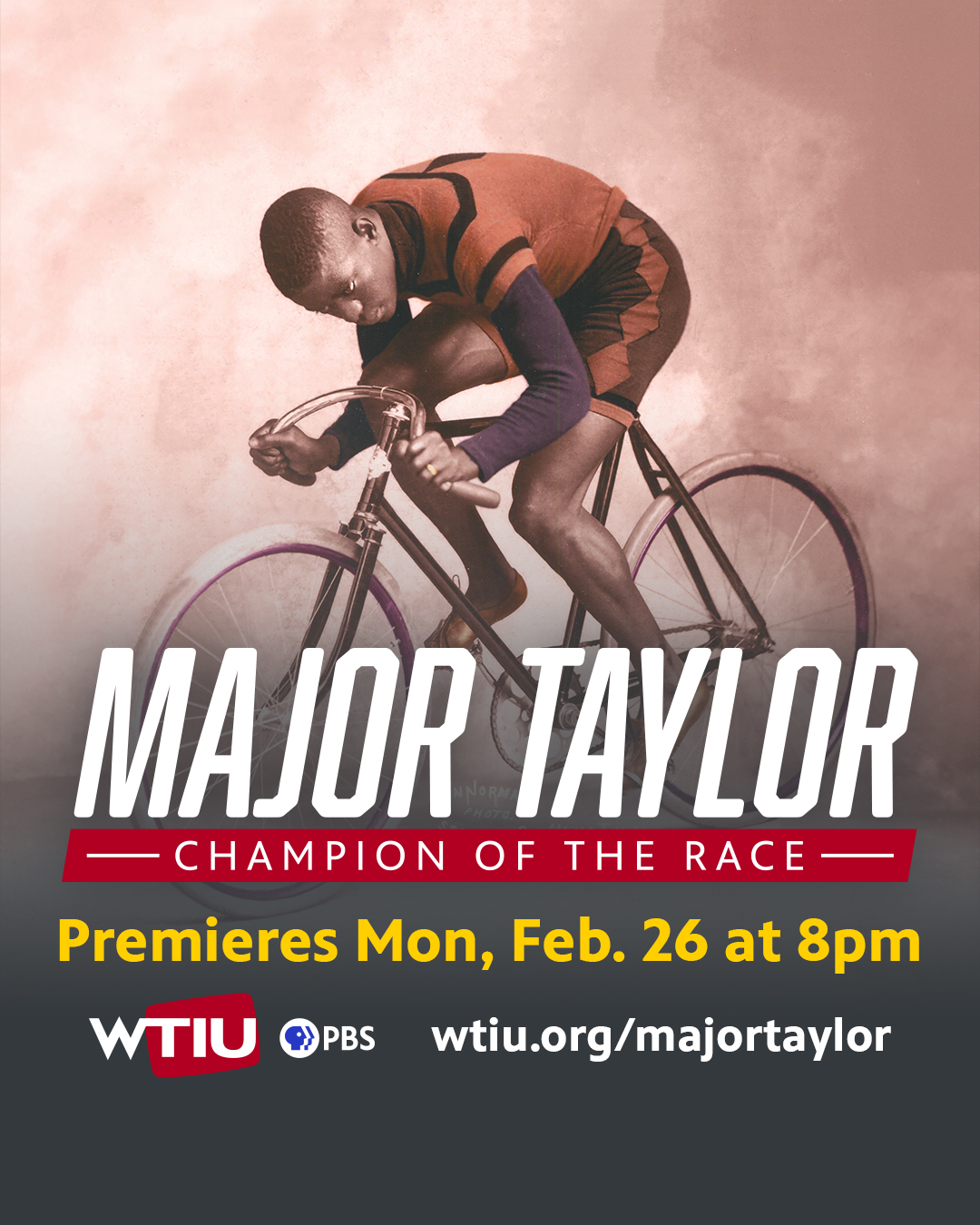By Greg Overton — Welcome to a new year of Classic Corner as a feature in Cycling Utah. For those of you who are unfamiliar with this column, Classic Corner takes a historical look at cycling each issue. We will look mostly at racing related products, people, and events from the 1950s through the 1980s.
[Editor’s Note: This article originally appeared in the March 1997 issue of Cycling Utah]
Some of the topics from last season were Masi, Cinelli, Paramount, Campagnolo and Mavic. This year we will continue down this same path, and possibly rekindle memories of your first racing bike or some obscure component in the bottom of that tool box.
The 1997 racing season is yet to begin (at press time), so we thought it would be great to give a perspective on racing in Utah in a different era. Classic Corner recently had the opportunity to visit with Salt Lake native Jan Hyde.
Jan raced on a National level in the fifties and sixties and has some wonderful memories about those days. For readers of this column, you may recall the story on Cinelli in the September issue. The bike featured in that story was one of Jan’s racers from the early sixties.
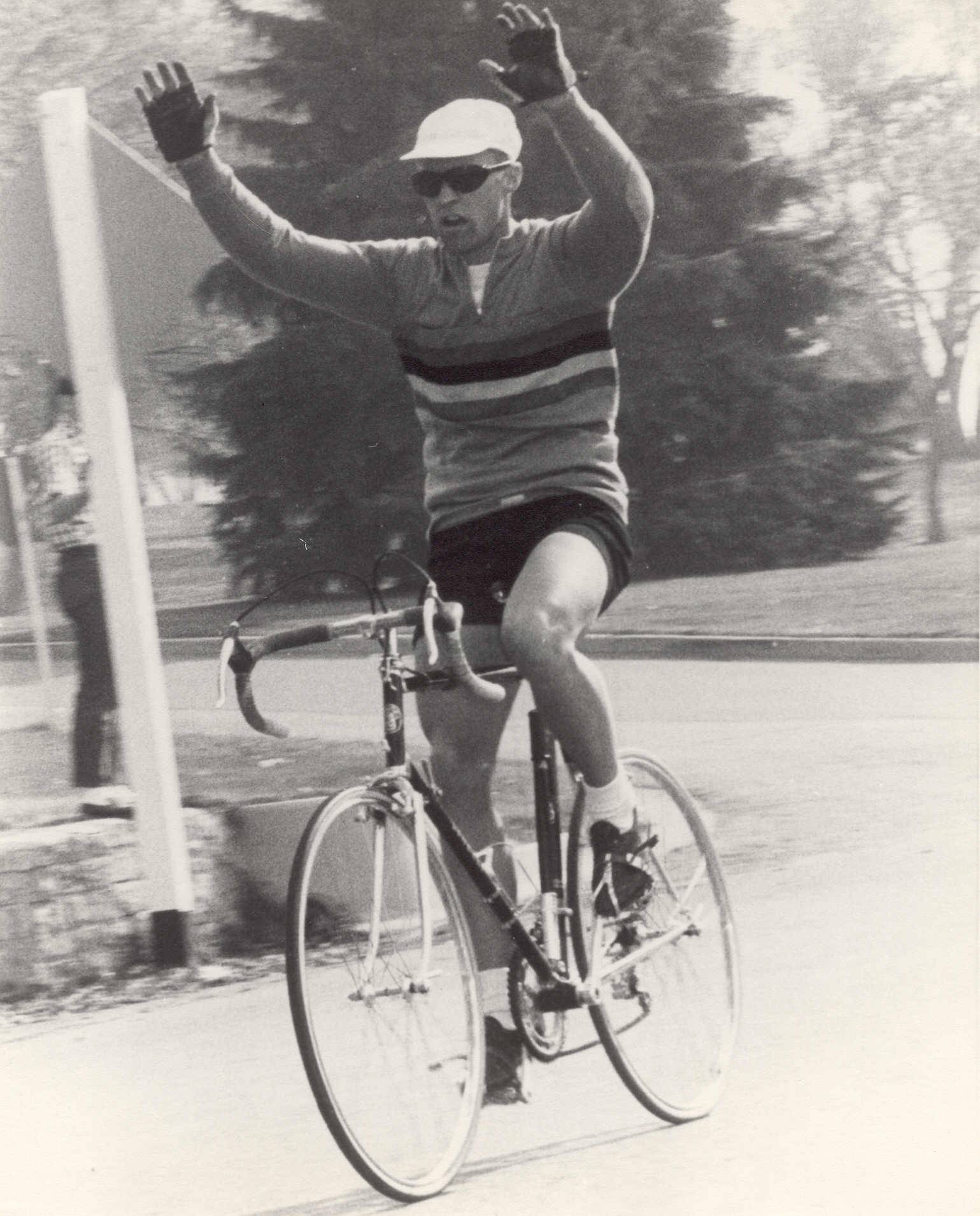
As a child in the forties, Jan heard about bike racing’s heyday from his grandfather and father.
“Bike racing for me,” Hyde begins his story, “goes back to my grandfather, Orson Hyde. In the early 1900s, the Salt Palace Velodrome was located at 900 South to 1300 South and State Street. My Grandfather was a musician there and knew all the riders. It was part of the National scene in those days, and Frank Kramer and all the big shots of track racing would race there. My grandad was there all the time, and as a result my father wound up in that crowd as well. He got a Pierce Kramer bike from one of the racers and that kind of started him off.
“There was a local racer by the name of Frank Walker who was very good. He rode with the Kramers and Major Taylors of the day, and I remember him telling my dad about ‘The fastest bike racer ever.’ He was talking about Major Taylor. Kramer and Taylor were the big names, but there were many others who were right there too. The big names in bikes in those days were Iver Johnson and Pierce Arrow.
“At age 12, I got my first racing bike. My dad had it built for me, and I don’t remember what it was, but it had tubular rubber tires and an 81 inch gear, and I started riding a lot. A local racer named Wendell Rollins saw me riding at Liberty Park and suggested that I start racing. I won my first race, the Little Mountain race, in 1952. It was a handicapped start where each rider was sent off at intervals based on his experience, and I ended up winning.
“My first year of really racing was 1953, and Wendell and those guys put me in the qualifiers for the National Championships and I ended up going. Wendell took me and I rode his bike. which was nicer than mine. I didn’t win, but I went to Nationals my first year racing. I raced locally until 1956, then just lost interest and stopped riding.
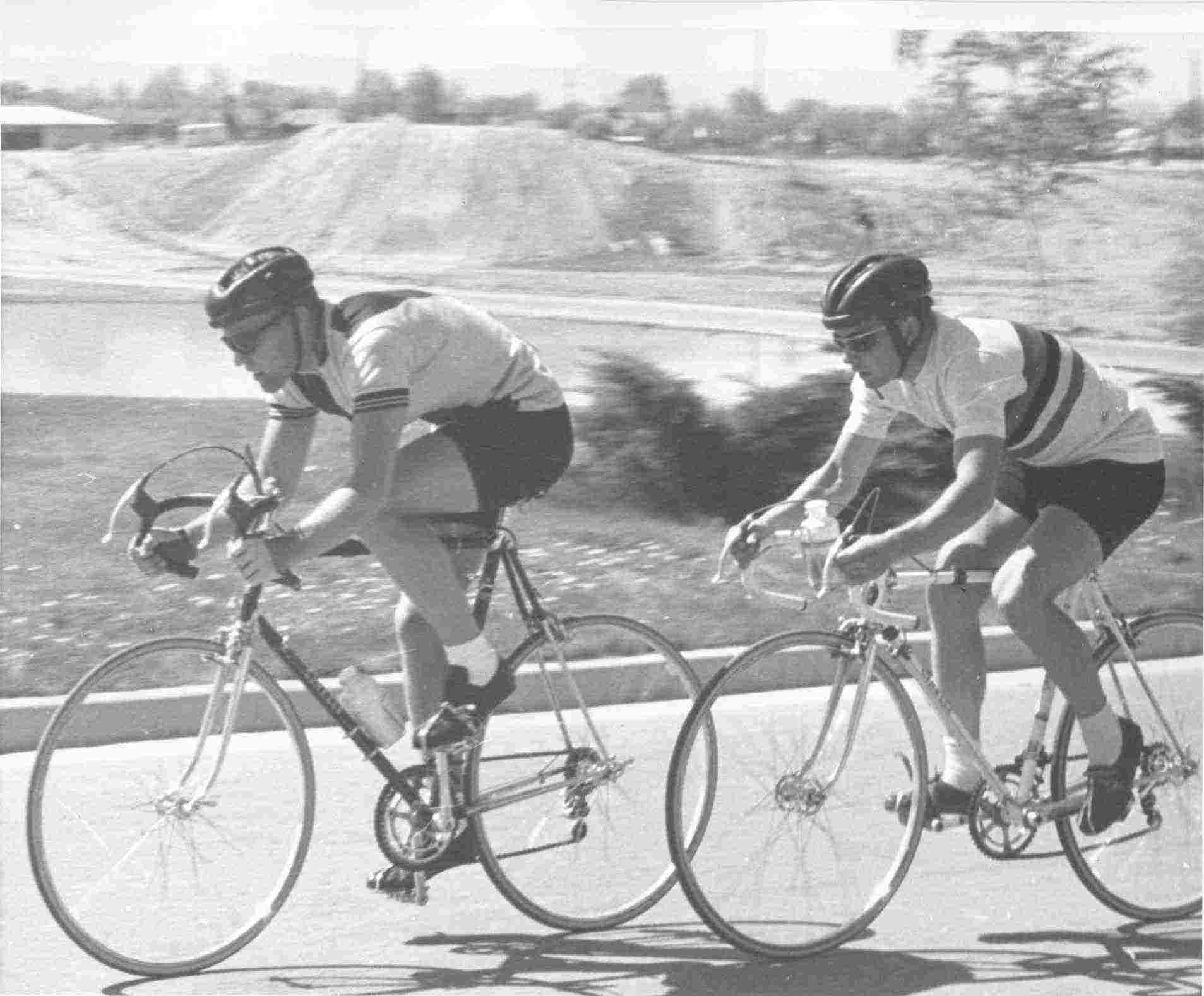
“In 1962, on a whim I went into Joe Fisher’s shop and saw a Legnano there that I liked and could afford, so I bought it and started riding again. I was at the University of Utah then and started riding with two other guys – Pete Locke from California, and Ward Hindman from Colorado. Pete knew a lot about racing, and knew Spence Wolfe at Cupertino Bike Shop out there. Spence was the recognized expert on racing bikes and had sold Pete a Cinelli. Before long Ward and I both ordered Cinellis from Cupertino. My Cinelli cost me $210.00 for the complete bike including shipping. I ordered it with chrome stays and trim, so it was more than normal price. I also got Clement Del Mondo silk sew ups which were $21.00, and Spence was the only one who carried them. I had to wait over six months for the bike to arrive.
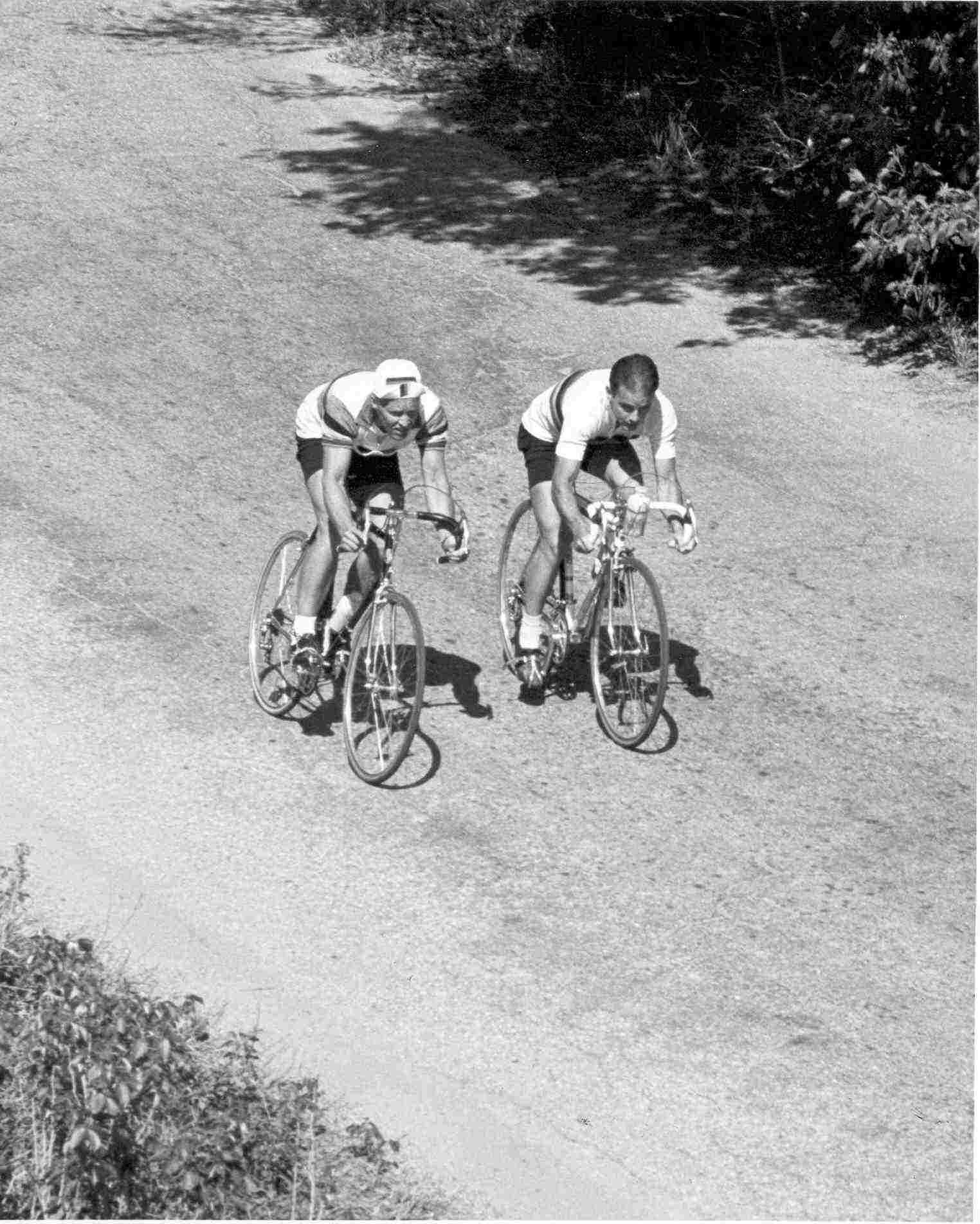
“Before long we had a good core group of riders locally who were always in shape and ready to ride. In addition to Pete, Ward and myself, there were Milo Hadlock, who was still competing up to recently, Bill Young, Paul DeBuzek and Rod Golson. Our club was called the Utah Wheelmen, and we did regular training rides. Our favorites were from the University, up Parley’s Canyon and back down Emigration for a short, between-classes ride. For longer rides, we would go from Salt Lake down to the Alpine Loop, over to Provo Canyon, then to Park City and back down Emigration or Parley’s. Another regular was a late spring ride to Brighton, up over Guardsman Pass on the dirt road to Park City and back down. There was also Heber to Mirror Lake, and East Canyon to Coalville or Farmington. My favorite was the Alpine Loop ride.”
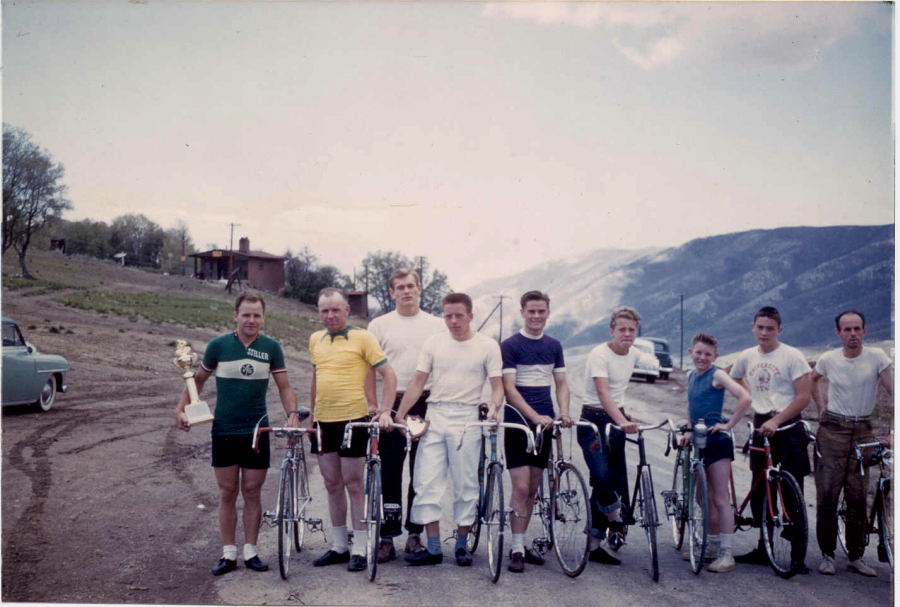
“There were not many American racers of International level then, and the name that comes to mind on a National level is Jack Disney. He was really a speed skater who rode for training, but was always at the top of National events. The main guys on our level were Bob Tetzloff from California and Michael Hiltner, who was known all over as a great climber. Hiltner was very much a loner, he never said anything, but he was always right under your elbow. He also rode a Cinelli. In California, there was a hillclimb from the coast to the top of Malibu Canyon, and at the base of the climb was the Stone Market – a hangout for riders. Hiltner owned the record for this hillclimb and had his time posted on the board at this market as a challenge to other riders. I rode this climb and beat his record by three seconds. I went into the market and pinned my time above his on the board, and I got a phone call from him about how I was training.
“The International racers that we would hear about were ‘The Great Coppi,’ Jacques Anquetil, Tom Simpson, Louison Bobet, Christophe, and later a young Merckx. The only word we got on the Tour de France was from the British magazine Cycling. We would follow the race two or three weeks behind in the magazine. I remember when Tom Simpson died in the Tour, we found out on a delay weeks after.
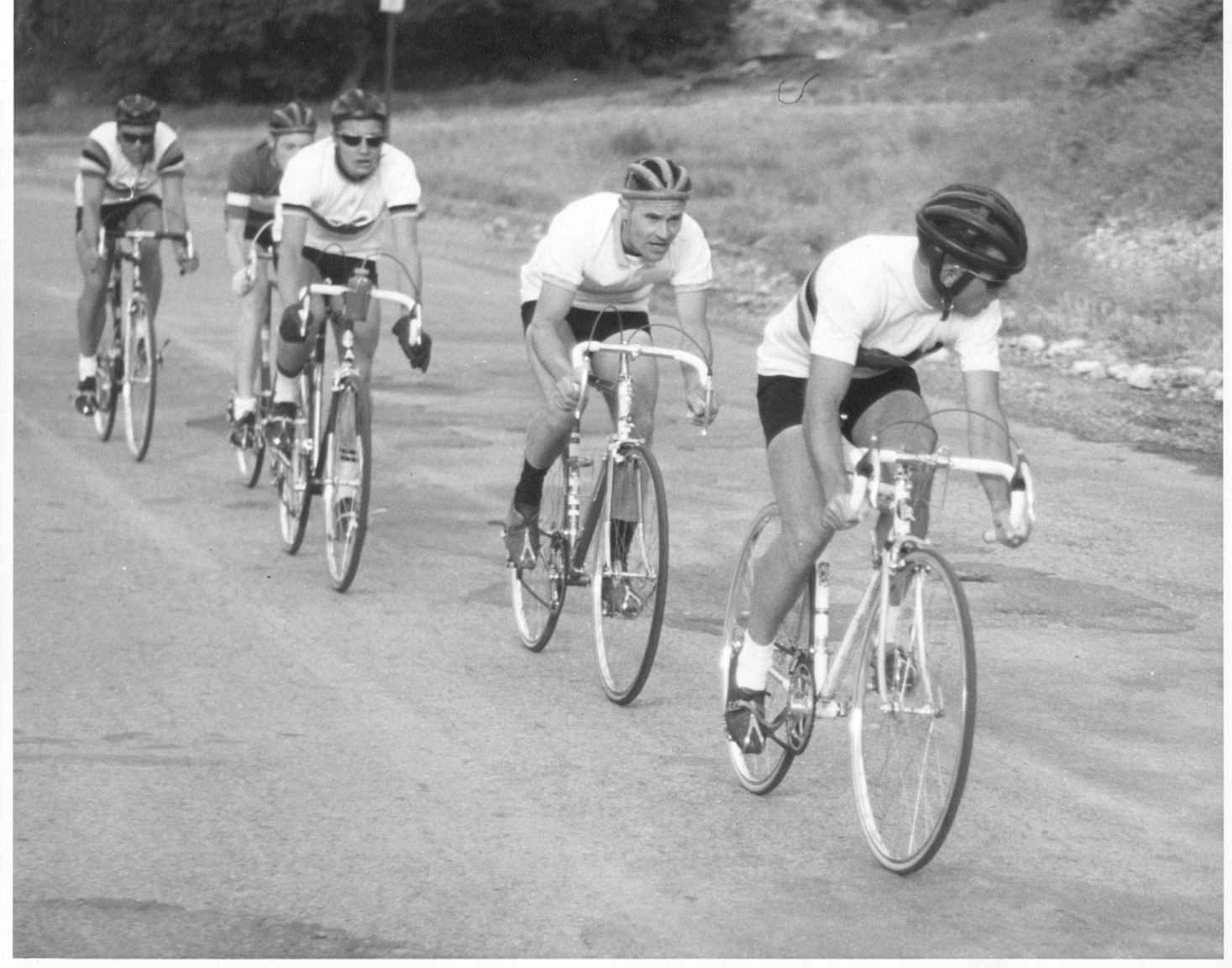
“In 1964, our club decided to challenge anyone from BYU to a race on the day of the football game between the U of U and BYU. The game was in Salt Lake, so we put the word out that the race would leave Provo at 2:30 in the afternoon. It was an ‘all-comers’ kind of challenge race. We went to Provo and waited at the starting area, and waited. At 2:30, no one was there. At 2:40, no one.
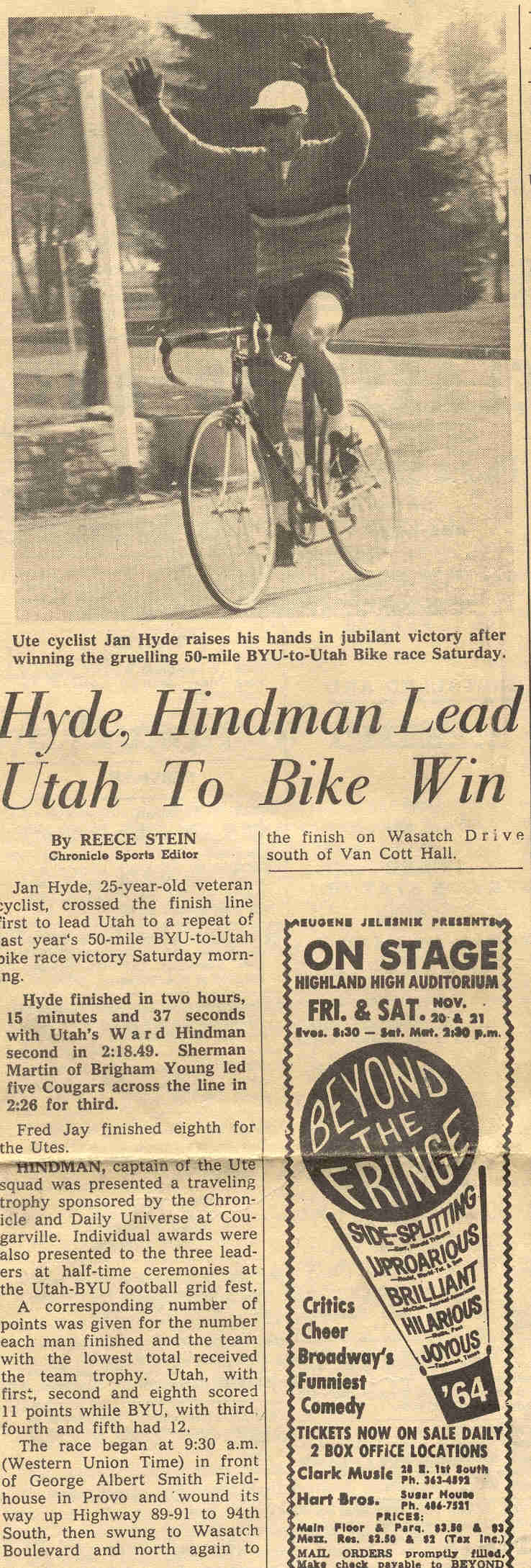 “We were just getting ready for the training ride back to Salt Lake when a group of about 35 riders came around the corner. There were some excellent riders there too. We swallowed hard and began trying to formulate a strategy for the race. It was a tough race, but our plan did work, and Pete, Ward and myself ended up off the front. Both of them fell off and I ended up winning the thing. That race became an annual event on game day, travelling to the home site. Other big races in the area were a July 4th criterium at Lagoon, road races from Salt Lake to Malad, Idaho, and from Salt Lake to Elko, Nevada. The Elko Relay, as it was called, was 235 miles and was a major event with ten-man relay squads competing. There was a ring that racers would wear around their neck and hand off to the next rider. You would put your strong guys on the hills and sprinters on the flats. We raced for plaques and trophies in those days.
“We were just getting ready for the training ride back to Salt Lake when a group of about 35 riders came around the corner. There were some excellent riders there too. We swallowed hard and began trying to formulate a strategy for the race. It was a tough race, but our plan did work, and Pete, Ward and myself ended up off the front. Both of them fell off and I ended up winning the thing. That race became an annual event on game day, travelling to the home site. Other big races in the area were a July 4th criterium at Lagoon, road races from Salt Lake to Malad, Idaho, and from Salt Lake to Elko, Nevada. The Elko Relay, as it was called, was 235 miles and was a major event with ten-man relay squads competing. There was a ring that racers would wear around their neck and hand off to the next rider. You would put your strong guys on the hills and sprinters on the flats. We raced for plaques and trophies in those days.
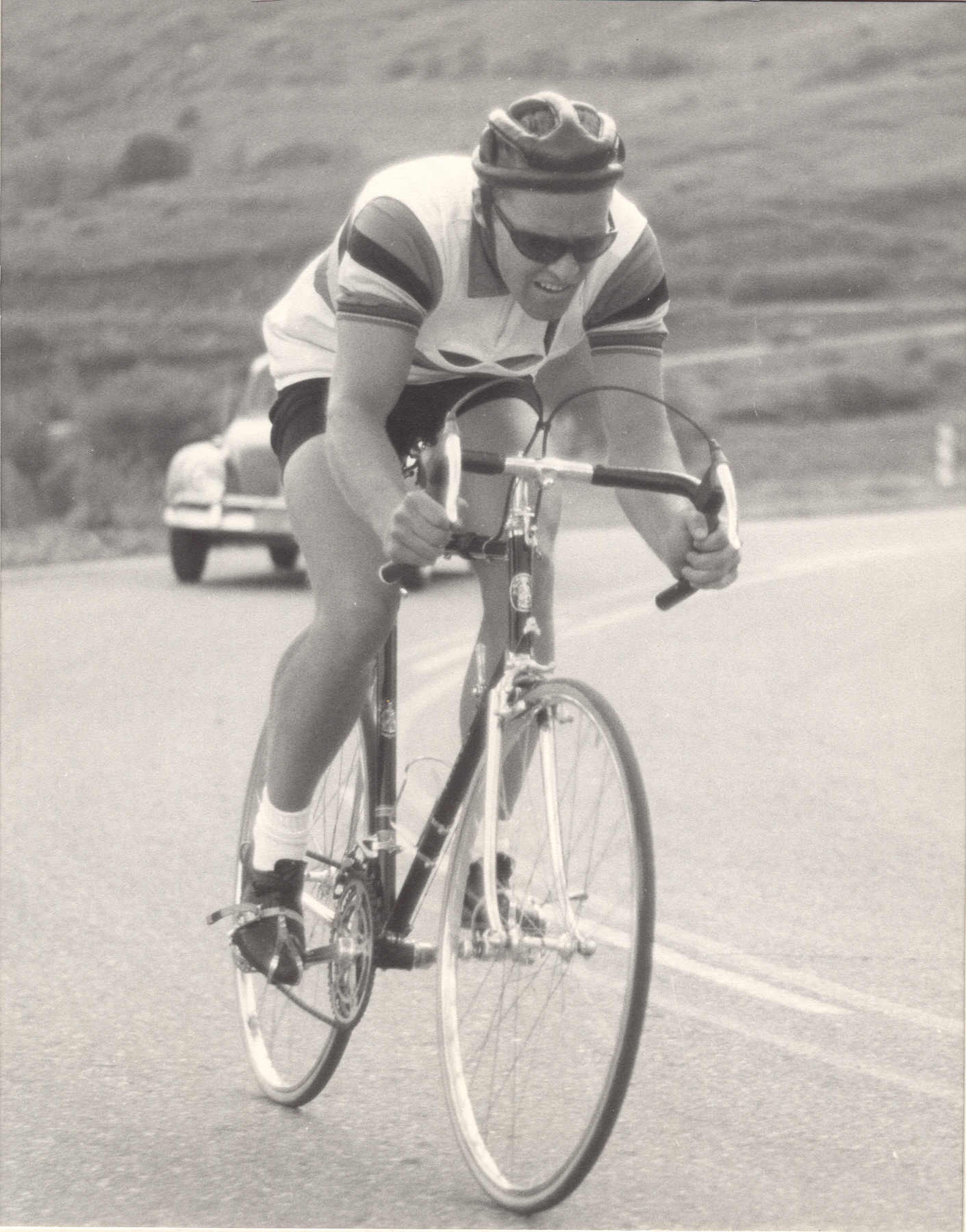
“In 1965, I moved to southern California, and raced for the Santa Monica Cycling Club. I did very well down there and finished third in the California Championships on the track. That was enough to send me to Nationals on the road! In that race, I crashed and broke my nose, but I continued for one lap until I was too dizzy to hold a line, so I just went straight for the hospital. I also raced a tandem down there. It was a red Follis tandem from France that I got from the Santa Monica Bike Shop, and had them put a huge ring on the crank. I had Spence Wolfe make a new derailleur cage to take up the extra chain. You could wrap that thing out to amazing speeds, but it had a ‘mushy’ frame that would traverse about a foot either side as you rode. That tandem is still around; I took it to Rod Golson’s shop about four years ago, and I think it’s still there.
“Follis was one of the big names for bikes back then. The best bikes at that time were Schwinn Paramounts, Peugeot, Legnano, Bianchi and Stella. Cinellis were very rare and kind of unknown, but there was no comparison in how they rode. They were just so smooth and handling was the best. For components it was Campagnolo and Stronglight, in that order with centerpull brakes from Weinmann and Mafac. Simplex was widely used, with their plastic derailleurs . Brooks saddles were used by almost everyone. The first ‘off the wall’ frame design I saw was called the ‘F’ frame with a small front wheel to lower the body and make the rider more compact for pursuit and sprinting on the track.
“The last race I rode was in Liberty Park in 1969, on a Schwinn Paramount. I honestly don’t remember if I won. I just kind of showed up and raced for the fun of it, as I recall. The most fun race I remember was the Double Century Race from Los Angeles to Palmdale and back to Santa Monica. I don’t recall the year, but I was in a group of about fifteen riders to attack and get away on the hills. When we got back to the coast north of L.A. we still had about ten guys in the group. And when you’re heading south on the coast out there you get a great tail wind. We cruised in to town at around fifty miles per hour with everyone pulling, what a great feeling that was!”
Jan stopped racing after that Liberty Park race to focus on raising his family and pursuing a career. Like his grandfather, Jan is a musician and freelanced for about 35 years while teaching music and repairing instruments. He has played with, among others, the Utah Symphony. For the past twelve years he has been with the Army band full time. These days his free time is spent building large scale remote control planes and answering questions from the author about bikes of the fifties and sixties.

